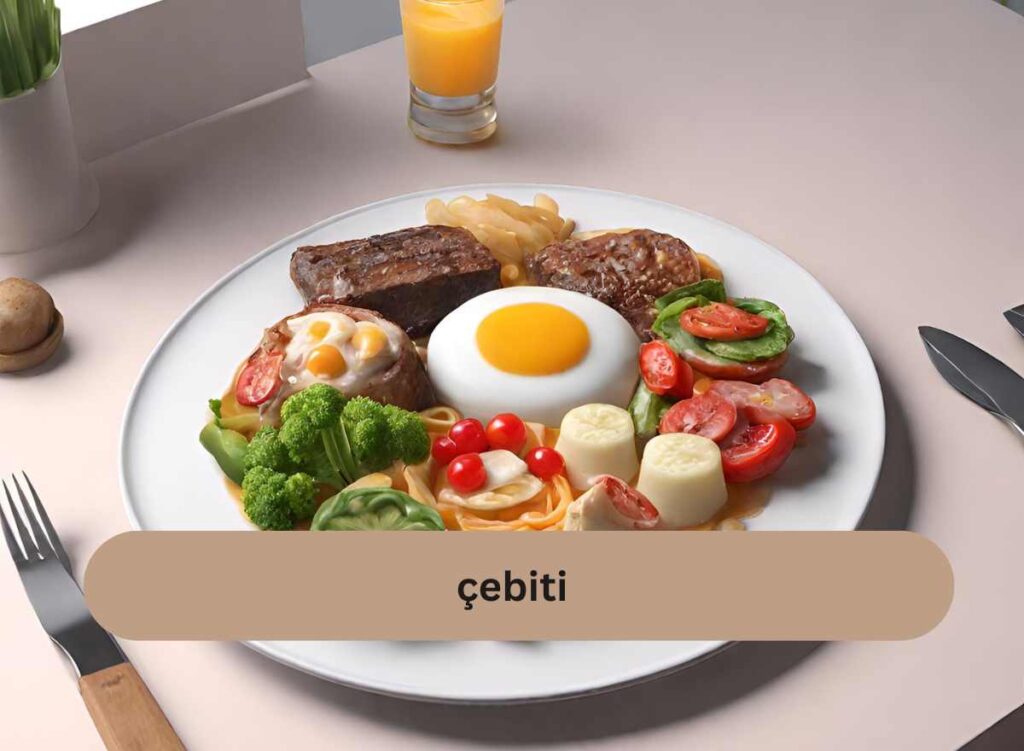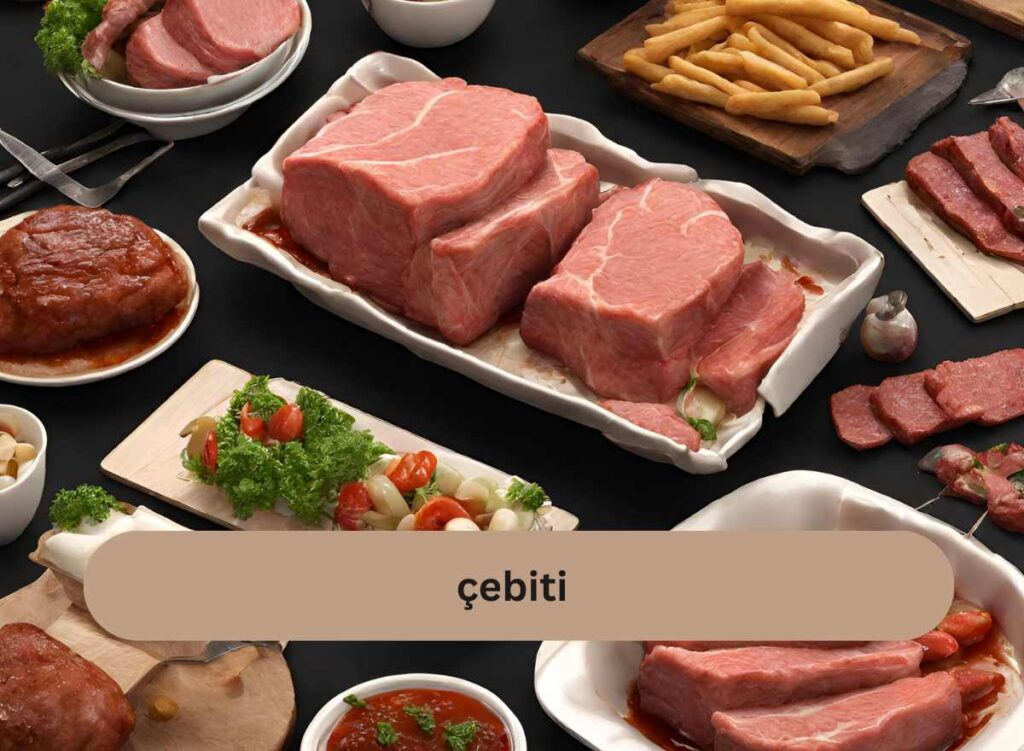
In the mosaic of Turkish gastronomy, there’s a dish that stands as a testament to the enduring legacy of Ottoman grandeur – Çebiti.
More than just a culinary creation, Çebiti is a journey through time, taking us back to the opulence of the Ottoman Empire and transcending its historical roots to become a global gastronomic ambassador.
This article delves into the intricacies of Çebiti, exploring its historical significance, key ingredients, regional variations, health benefits, and its contemporary adaptations.
Çebiti’s Historical Roots: A Legacy of Ottoman Opulence:

Çebiti’s origins can be traced back to the sumptuous days of the Ottoman Empire, spanning the 14th to the early 20th century.
Initially, it graced the tables of rulers and affluent families, symbolizing wealth and power. Legend even whispers that Sultan Suleiman the Magnificent favored this dish.
Over time, Çebiti evolved from a lavish meat-centric dish to a more inclusive, communal stew-like meal that adapted to the tastes of different social classes.
Key Ingredients: A Symphony of Flavors:
At the heart of Çebiti lies a carefully crafted ensemble of ingredients, each playing a vital role in creating its distinctive flavor profile.
The star is the meat, traditionally lamb or beef, cut into small, marinated cubes. Tomato paste, onions, and garlic contribute depth and savory overtones, while yogurt adds creaminess.
The spice mix, featuring cumin, paprika, and optional red pepper flakes, elevates Çebiti’s taste to perfection.
Crafting Çebiti: A Culinary Art Form:
Crafting Çebiti is an art, a meticulous process that involves marinating, slow cooking, and achieving the perfect flavor combination.
This culinary journey begins with assembling premium components and unfolds through a detailed step-by-step guide.
With the aid of a comprehensive recipe book, enthusiasts can recreate Çebiti’s magic in the comfort of their own kitchens.
Regional Variations: Exploring Turkey’s Culinary Landscape:
Çebiti takes on various forms as it traverses Turkey’s diverse regions, showcasing the nation’s gastronomic diversity.
In Istanbul, it transforms into Istanbul Çevirisi, featuring thin slices of marinated meat grilled to perfection. In Ankara, the capital city, a pan-fried variation with unique spices offers a distinct flavor profile. ‘
Each regional adaptation adds a layer of richness to the Çebiti experience, contributing to its status as a global culinary delight.
Health Benefits: Nourishing the Body and Soul:
Beyond its exquisite taste, Çebiti offers a plethora of health benefits. Rich in high-quality protein, essential minerals, and fiber, it promotes overall health.
The diverse herb selection contributes to a robust immune system, making Çebiti not just a feast for the taste buds but a nourishing addition to one’s diet.
Adding a Modern Twist: Çebiti in the Contemporary Kitchen:
While rooted in tradition, Çebiti invites innovation. Enthusiasts can explore the possibilities of replacing traditional ingredients, incorporating new flavor profiles, and adding texture with creative toppings. Çebiti seamlessly blends tradition with a contemporary twist, appealing to modern palates while preserving its timeless heritage.
Pairing Suggestions: Elevating the Çebiti Feast:
No culinary journey with Çebiti is complete without the perfect pairing. Pilaf, yogurt sauce, grilled veggies, and Shepherd’s salad are suggested sides, each contributing to the symphony of flavors that define the Çebiti experience.
Investigating Culinary Effects: Historical and Cultural Influences:
Delve into the historical and cultural influences that have shaped Çebiti. Explore the potential contributions of external forces, such as migrations, conquests, and trading routes, to the evolution of this beloved Turkish dish.
Significance in Turkish Culture: Beyond the Plate:
Beyond its taste, Çebiti holds cultural significance in Turkish traditions, holidays, and family gatherings. It serves as a focal point for fostering enduring memories and strengthening familial bonds, transcending its role as a mere dish.
Çebiti in Popular Culture: Beyond the Kitchen:
Explore instances where Çebiti has found its way into popular culture – be it literature, movies, or television. Discover how it has become not just a dish but a cultural symbol, influencing diverse facets of societal expression.
Seasonal Variations: A Culinary Journey Through the Calendar:
Examine how the ingredients and preparation methods of Çebiti might vary seasonally. Are there specific times of the year when certain ingredients are more abundant, leading to regional variations and unique twists on the classic recipe?
Çebiti Festivals: Celebrating Culinary Excellence:
Research if there are any festivals or events dedicated to Çebiti. Explore how communities celebrate this culinary delight, possibly featuring cooking competitions, cultural performances, or other activities centered around Çebiti.
Çebiti Etymology: Unraveling Linguistic Roots:
Provide insight into the linguistic aspect of the term “Çebiti.” Explore its linguistic roots, potential variations, and how the name reflects the dish’s essence, giving a linguistic dimension to the culinary journey.
Social Media Influence: A Digital Culinary Odyssey:
Investigate the role of social media in promoting Çebiti. Explore well-known challenges, hashtags, or influencers that have contributed to its popularity on platforms like YouTube, Instagram, TikTok, or others.
Çebiti and Sustainability: A Harmonious Culinary Ecosystem:
Consider discussing the sustainability aspects of Çebiti. Explore how traditional preparation methods and locally obtained ingredients align with contemporary culinary trends, promoting sustainable practices and a harmonious relationship with the environment.
DIY Çebiti Kits: Bringing Culinary Joy Home:
Explore if there are businesses or initiatives offering DIY Çebiti kits. This modern adaptation aims to make the dish accessible globally, allowing individuals to experience the joy of preparing and enjoying Çebiti in the comfort of their homes.
Çebiti and Food Tourism: A Culinary Pilgrimage:
Discuss how Çebiti has become a culinary attraction for food tourists visiting Turkey. Explore guided food tours or experiences that focus on Çebiti and other traditional Turkish dishes, adding a gastronomic dimension to the tourist experience.
Çebiti Artistry: A Visual Feast for the Senses:

Explore the artistry involved in presenting Çebiti. Discuss inventive presentations, plating methods, or visual appeals that chefs or amateur cooks use to transform Çebiti into a visually stunning culinary masterpiece.
Frequently Asked Questions(FAQs)
Q1: What is Çebiti?
Çebiti is a Turkish dish with Ottoman origins, featuring marinated meat, spices, and a blend of savory ingredients.
Q2: How did Çebiti evolve over time?
Originally a lavish meat dish in the Ottoman era, Çebiti transformed into a communal stew, adapting to different social classes and incorporating regional variations.
Q3: What are the key ingredients in Çebiti?
The main ingredients are diced lamb or beef, yogurt, tomato paste, onions, garlic, and a spice mix featuring cumin, paprika, and optional red pepper flakes.
Q4: How is Çebiti made?
Çebiti involves marinating meat, slow cooking, and combining it with a rich blend of ingredients. The process is detailed in a step-by-step recipe.
Q5: What are the regional variations of Çebiti?
In Istanbul, it becomes Istanbul Çevirisi with thin slices of grilled meat. In Ankara, a pan-fried variation with unique spices is popular.
Q6: Are there health benefits to consuming Çebiti?
Yes, Çebiti is rich in high-quality protein, essential minerals, and fiber. The diverse herb selection contributes to a robust immune system.
Q7: Can Çebiti be adapted for modern tastes?
Absolutely, Çebiti invites innovation. Traditional ingredients can be replaced, new flavor profiles introduced, and textures added with creative toppings.
Q8: What are suggested pairings with Çebiti?
Grilled vegetables, pilaf, yogurt sauce, and Shepherd’s salad complement Çebiti, enhancing the overall dining experience.
Q9: How has Çebiti contributed to Turkish culture?
Çebiti holds cultural significance in Turkish traditions, holidays, and family gatherings, symbolizing togetherness and shared moments.
Q10: Is Çebiti featured in popular culture?
Yes, Çebiti has found its place in literature, movies, and television, becoming more than a dish – a cultural symbol.
Q11: Are there any festivals dedicated to Çebiti?
Research indicates various festivals celebrating Çebiti, featuring cooking competitions and cultural performances.
Q12: How does social media influence Çebiti’s popularity?
Social media, through challenges, hashtags, and influencers, has played a significant role in promoting Çebiti globally.
Q13: Is there an environmental aspect to Çebiti?
Çebiti aligns with sustainability through its use of traditional preparation methods and locally sourced ingredients.
Q14: Are there DIY Çebiti kits available?
Some businesses offer DIY Çebiti kits, providing an accessible way to enjoy the dish at home.
Q15: How has Çebiti become a culinary attraction for tourists?
Çebiti is part of guided food tours, offering tourists a taste of traditional Turkish cuisine and enriching their gastronomic experience.
Conclusion: Savoring the Essence of Çebiti:
In conclusion, Çebiti is more than a meal; it’s a cultural ambassador that invites people to savor the diverse layers of Turkish history.
Whether enjoyed as a cherished breakfast staple, a hearty lunch, or a comforting dinner, Çebiti embodies the essence of togetherness and shared moments around a table filled with steaming hot goodness.
As it graces global menus, Çebiti continues to transcend borders, offering a taste of Turkish heritage that unites people and transcends national boundaries.








